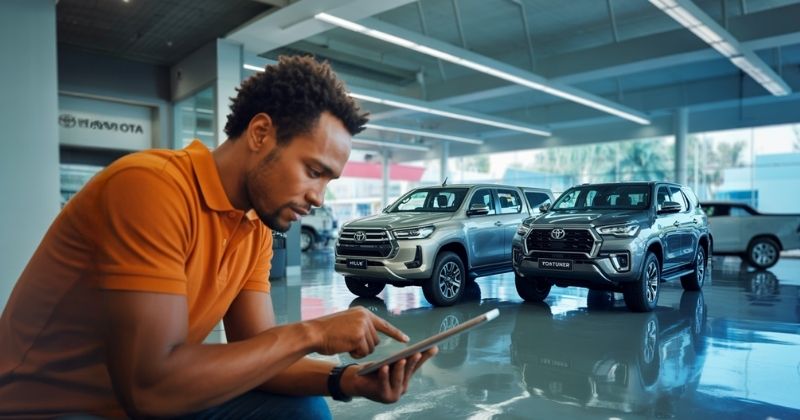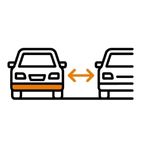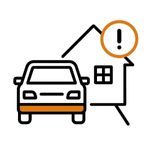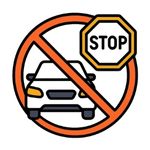
Vehicle-related crime continues to be a significant safety concern across South Africa, with certain makes and models being targeted far more frequently than others. Criminal syndicates often select vehicles based on profitability, ease of theft, and demand in both local and cross-border markets. Factors such as high resale value, demand for parts, and suitability for criminal activity contribute to why some vehicles are stolen or hijacked more often.
Key Takeaways
- Certain Vehicles Are Prime Targets: Models like the Toyota Hilux, Volkswagen Polo, and Toyota Fortuner are among the most frequently hijacked or stolen in South Africa, mainly due to high resale value, strong demand for parts, and widespread use.
- Hijackers Use Varied Tactics: Offenders employ surveillance, technology-driven methods, impersonation, and group operations to carry out thefts, often adapting their strategies to avoid detection.
- High-Risk Areas And Prevention: Gauteng records over half of the country’s hijackings, with off-ramps, public spaces, and residential driveways posing significant risks. Proactive safety habits and situational awareness are essential to reduce vulnerability.
About Arcadia Finance
Secure the funds you need with Arcadia Finance. Compare offers from 19 trusted NCR-accredited lenders, pay no application fees, and enjoy a simple, reliable process built around your financial needs.
Recent Statistics on Stolen Cars in South Africa
Car theft and hijackings remain serious challenges in South Africa, with thousands of incidents reported each quarter. While recent data shows some decline compared to 2024, the scale of the problem is still severe, with both private car owners and businesses facing significant risks.
Vehicle Theft Trends in 2025
According to the South African Police Service (SAPS), a total of 7,731 vehicle thefts were reported between January and March 2025. This means that around 86 cars are stolen every day. Encouragingly, this figure represents a 9.1% drop compared to the same period in 2024, when 8,502 vehicles were reported stolen.
Theft cases are not evenly spread across the country. Gauteng recorded the highest number of stolen vehicles, with more than 4,000 incidents in the first quarter alone. KwaZulu-Natal followed with 1,359 cases, while the Western Cape reported just over 1,000. Smaller provinces such as Limpopo and the Northern Cape reported far fewer cases, but they still remain affected.
Hijackings versus Vehicle Theft
Tracker’s Vehicle Crime Index, covering the second half of 2024, highlights a concerning trend: hijackings now account for 56% of all stolen vehicle-related crimes, while theft makes up the remaining 44%.
Business-owned vehicles are particularly vulnerable, being twice as likely to be hijacked as stolen. The risk is even greater in the Eastern Cape and Western Cape, where hijackings are four to eight times more likely than theft. Personal vehicles, on the other hand, face mixed risks. In Gauteng and KwaZulu-Natal, theft is slightly more common, while in the Eastern and Western Cape hijackings dominate.

Why Criminals Target Certain Vehicles
Criminal activity involving vehicles in South Africa is not random. Offenders often focus on particular models that meet specific criteria, making them more attractive for theft or hijacking. This targeting is influenced by several factors that can significantly increase the value or usefulness of the stolen vehicle.
High Resale Value or Demand for Parts
Vehicles that hold strong resale value or have components in high demand on the illegal market are often prioritised. Stolen cars can be sold whole or dismantled for parts, with certain makes and models fetching more profit for syndicates.
Ease of Access
Older vehicles or those without advanced security measures are easier for criminals to access. The lack of modern immobilisers, tracking systems, or advanced locking mechanisms makes these cars a simpler and faster target.
Popularity on South African Roads
The more common a model is, the easier it becomes to disguise and sell, either complete or stripped for parts. Popular vehicles blend into traffic, reducing the chance of detection by authorities.
Suitability for Criminal Use
Some cars are chosen for their reliability, discreet appearance, and ability to handle different terrains. Such vehicles can be repurposed for transporting stolen goods, carrying out other crimes, or being used as getaway cars.
Recognising these patterns can help South African drivers make better-informed security decisions, reducing the risk to their vehicles and personal safety.
How Hijackers Operate
Understanding how hijackers operate can help drivers reduce their risk. Their tactics continue to change, often catching victims off guard due to limited awareness of new methods:
- Target Selection: Criminals frequently carry out informal surveillance, assessing different vehicles to identify the one that best matches their plan. This process often includes researching the make, model, and security features before making a move.
- Use of Technology: With modern vehicles adopting advanced key systems, hijackers are making full use of technology-driven techniques to gain access. Changes in how car keys function have opened opportunities for new forms of theft.
- Appearance and Deception: The stereotypical image of a hijacker no longer applies. Many now dress in respectable clothing and may drive high-end vehicles to appear less suspicious. This calculated approach allows them to blend in without raising alarms.
- Impersonation of Authorities: Some hijackers pretend to be police officers. If this occurs and you feel unsafe, it is advisable to continue driving to the nearest police station instead of stopping in an isolated area.
- Group Operations: Hijackings are rarely carried out by a lone individual. Offenders usually operate in pairs or small groups, coordinating their actions for greater control over the situation.

Most Hijacked/Stolen Cars In South Africa
Vehicle hijackings remain a major concern in South Africa, with certain models attracting more attention from criminals due to their market demand, resale potential, and parts value.
| Vehicle Model | Why It’s Targeted |
|---|---|
| Toyota Hilux | Most hijacked vehicle in the country. High resale value, constant demand for parts, and versatile use in personal, business, and agricultural sectors. |
| Volkswagen Polo | Popular hatchback that’s affordable and widely available. Easy to resell, and parts are in high demand across income groups. |
| Toyota Fortuner | Valued for off-road strength and rugged design. Targeted for resale and parts, especially in rural areas with weaker policing. |
| Ford Ranger | Durable and in demand for both business and private use. High-value components and wide usage drive its theft risk. |
| Nissan NP200 | Practical workhorse vehicle used across industries. Frequently stolen for resale and parts, especially in small load transport. |
| BMW 3 Series | Luxury sedan with prestige appeal. High second-hand and parts value, with strong demand in international markets. |
| Toyota Quantum | Minibus taxi industry demand fuels theft. Large passenger capacity makes it valuable for resale into taxi networks. |
| Mercedes-Benz C-Class | Premium sedan targeted for advanced features and high resale value. Often dismantled for parts or sold via illegal networks. |
| Hyundai H-1 | Popular for family and business transport. Large interior and versatility drive resale potential in both full and dismantled form. |
| Audi A3 | Compact yet premium vehicle. Strong brand appeal, valuable parts, and demand locally and abroad keep it high on hijackers’ lists. |
Hijacking Hotspots in South Africa
Cartrack, a recognised leader in vehicle recovery, has reviewed data from the SAPS quarterly crime statistics, revealing the provinces where motorists face the greatest risk of hijacking incidents.
Most Affected Areas
The following locations have been identified as having the highest number of reported hijackings:
- Ivory Park, Gauteng
- Phillipi East, Western Cape
- Harare, Western Cape
- Nyanga, Western Cape
- Moroka, Gauteng
- Loate, Gauteng
- Orange Farms, Gauteng
- Eldorado Park, Gauteng
- Tembisa, Gauteng
- Jabulani, Gauteng
Provincial Trends
Recent statistics show that KwaZulu-Natal recorded a 17.6% drop in carjackings, while the Eastern Cape saw a 5.2% decline. In contrast, Gauteng alone reported over 3,000 hijackings, representing more than half of all such crimes nationwide during the third quarter of the 2023/24 financial year.
Risk Factors at Road Access Points
According to SAPS data, off-ramps and on-ramps are frequently targeted by criminals. These areas are considered high-risk because of limited escape options for motorists and insufficient patrol visibility, particularly in Gauteng. High crime levels in these zones are often linked to dense populations, economic hardship, and long-standing criminal activity in surrounding areas.
Public Spaces as Targets
Hijackers also focus on public locations where vehicles are left unattended or drivers are momentarily distracted. Common examples include shopping centres, schools, churches and major sporting venues, where vehicles are often parked in large, accessible areas for longer periods.
What To Do During A Hijacking
If you are confronted by a hijacker, your primary focus should be on protecting your life rather than your possessions.
- Remain as composed as possible: Avoid sudden movements, shouting, or any aggressive behaviour that could escalate the situation.
- Follow the hijacker’s demands without resistance: Hand over the vehicle, keys, and any personal belongings when requested.
- Avoid direct eye contact unless told to do so: Maintaining a neutral, non-threatening posture can reduce perceived hostility.
- Act promptly when complying: Handing over items quickly and without argument reduces the risk of harm. Your personal safety far outweighs the value of the car or valuables.

How To Protect Yourself From Hijackings And Car Theft
It is always wise to take proactive measures to reduce the risk of hijackings or vehicle theft, regardless of the make or model of car you drive. Below are several practical safety tips to help protect both yourself and your vehicle.

Remain Alert While Driving
Stay attentive to your environment whenever you are on the road. Continuously monitor the vehicles and pedestrians around you and watch for suspicious behaviour. Pay particular attention as you near your home and check in your mirrors to see if another car may be following you.

Maintain Adequate Space Between Vehicles
Always keep a safe distance between your car and the vehicle ahead. Ideally, ensure that you can clearly see the rear tyres of the car in front. This space provides a vital escape route if you are confronted with a potentially dangerous situation.

Be Cautious In Your Driveway
Statistics indicate that around 80% of hijackings occur in driveways. Avoid stopping directly at your gate while it opens. Instead, wait in the road, leaving enough space to drive away quickly if you sense danger.

Secure Your Home Entrance
Ensure the entry point to your property is well illuminated at night. Remove or trim overgrown trees, hedges, or shrubs that might serve as hiding spots for criminals.

Avoid Unnecessary Stops
Refrain from pulling over on the side of the road to eat, send text messages, or take calls. These pauses can make you an easy target for opportunistic criminals.

Keep Valuables Out Of Sight
Never leave your handbag, mobile phone, or other valuables visible on seats or the centre console. Store these items securely in the boot or another concealed compartment.

Guard Against Remote Jamming
With remote jamming incidents becoming more frequent, always check your car’s locks manually before walking away. Do not assume the remote has worked without confirming.

Have Emergency Contacts Ready
Know the location of your nearest police station and save emergency service numbers on your phone. This ensures you can quickly request help if needed.
Conclusion
Vehicle hijackings and theft in South Africa remain a persistent safety concern, with certain makes and models drawing particular attention from criminal networks due to their value, demand for parts, and versatility. Offenders continue to adapt their tactics, making it essential for drivers to remain vigilant both on the road and at home. By understanding which vehicles are most at risk, recognising high-risk areas, and applying practical preventative measures, South African motorists can significantly reduce their exposure to such crimes while prioritising personal safety above all else.
Frequently Asked Questions
The Toyota Hilux consistently tops the list as the most hijacked vehicle in South Africa, valued for its resale potential, high demand for parts, and suitability for multiple uses across both urban and rural areas.
Criminals typically focus on vehicles with a high resale value, strong demand for parts, ease of access due to weaker security features, and popularity on the roads, which makes them easier to hide or resell.
Gauteng records the highest number of hijackings, accounting for more than half of all cases nationally, with hotspots including Ivory Park, Moroka, and Tembisa. High-risk zones also include off-ramps, on-ramps, and busy public spaces.
Drivers can lower their risk by remaining alert, avoiding unnecessary stops in unsafe areas, keeping valuables out of sight, securing their driveway and home entrance, and maintaining a safe following distance in traffic for quick escape if necessary.
Stay calm, follow instructions, and prioritise your safety over your vehicle or possessions. Avoid sudden movements, hand over keys and valuables quickly, and, if possible, avoid making direct eye contact unless told to do so.
Fast, uncomplicated, and trustworthy loan comparisons
At Arcadia Finance, you can compare loan offers from multiple lenders with no obligation and free of charge. Get a clear overview of your options and choose the best deal for you.
Fill out our form today to easily compare interest rates from 19 banks and find the right loan for you.


